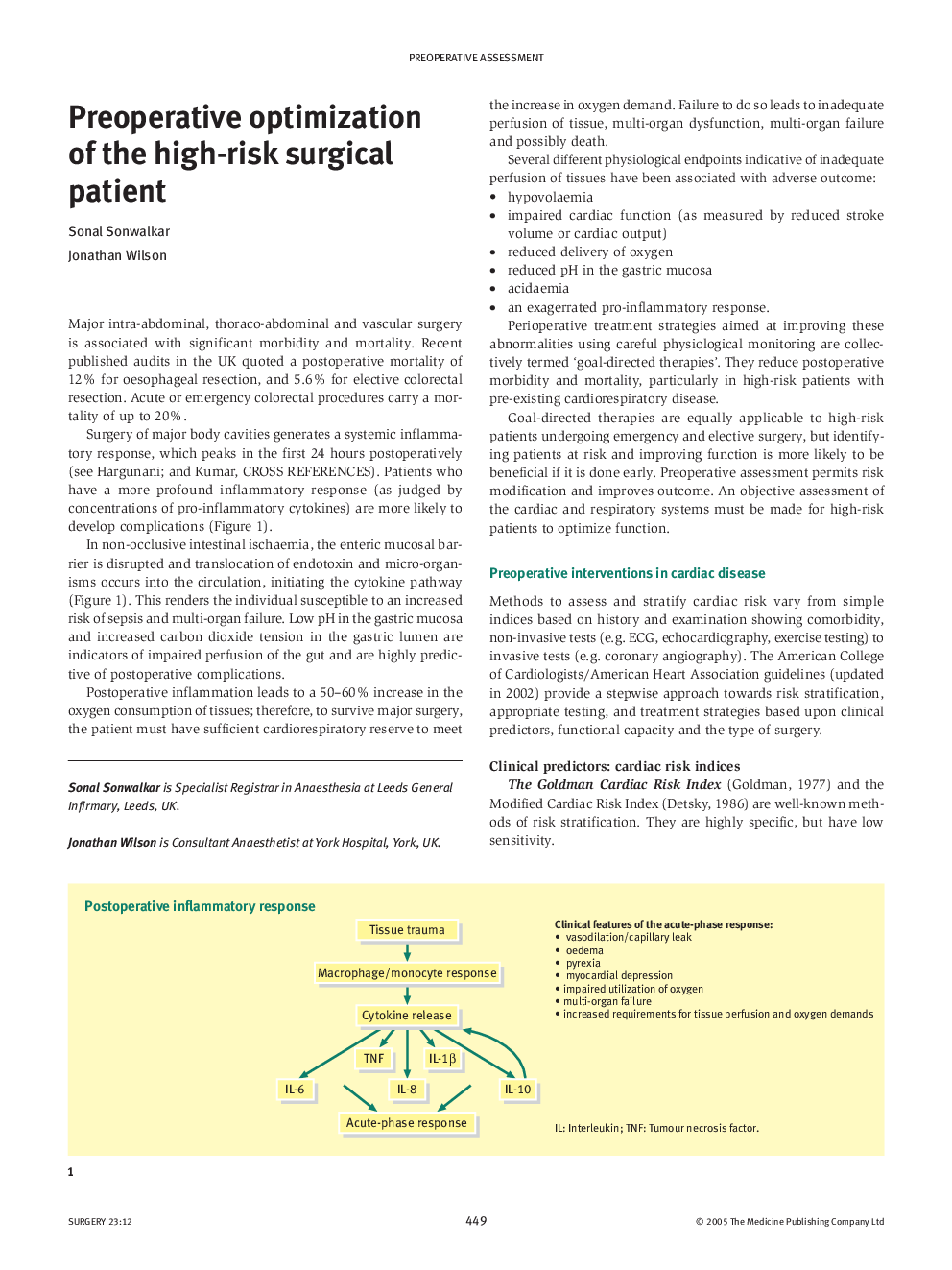| کد مقاله | کد نشریه | سال انتشار | مقاله انگلیسی | نسخه تمام متن |
|---|---|---|---|---|
| 9306636 | 1247841 | 2005 | 4 صفحه PDF | دانلود رایگان |
عنوان انگلیسی مقاله ISI
Preoperative optimization of the high-risk surgical patient
دانلود مقاله + سفارش ترجمه
دانلود مقاله ISI انگلیسی
رایگان برای ایرانیان
کلمات کلیدی
موضوعات مرتبط
علوم پزشکی و سلامت
پزشکی و دندانپزشکی
پزشکی و دندانپزشکی (عمومی)
پیش نمایش صفحه اول مقاله

چکیده انگلیسی
Intra-abdominal, thoraco-abdominal and vascular surgery is associated with a significant incidence of postoperative complications and mortality. Major surgery of body cavities produces a strong inflammatory response, which in turn causes a marked increase in oxygen requirement. Subjects who have a stronger inflammatory response (as judged by concentrations of pro-inflammatory cytokines in blood) are more likely to develop complications. To survive major surgery, the patient must have an adequate cardiorespiratory reserve to raise cardiac output and oxygen delivery to meet the increase in oxygen demand. The high-risk patient cannot spontaneously raise his cardiac output to the required level, leading to inadequate perfusion of tissue, multi-organ dysfunction, multi-organ failure and possibly death. High-risk patients can be identified (if time permits) by dynamic functional assessment of cardiorespiratory function. Appropriate therapy (e.g. beta-blockers, statins) should be started to optimize physical condition before surgery. Perioperative treatment strategies aimed at improving these abnormalities in tissue perfusion, using carefully monitored physiological variables, are termed 'goal-directed therapies'; they reduce postoperative morbidity and mortality, particularly in high-risk patients with pre-existing cardiorespiratory disease. Perioperative haemodynamic optimization requires additional monitoring, resources and environment (ICU or HDU), but significantly improves outcome in the patients at most risk.
ناشر
Database: Elsevier - ScienceDirect (ساینس دایرکت)
Journal: Surgery (Oxford) - Volume 23, Issue 12, 1 December 2005, Pages 449-452
Journal: Surgery (Oxford) - Volume 23, Issue 12, 1 December 2005, Pages 449-452
نویسندگان
Sonal Sonwalkar, Jonathan Wilson,